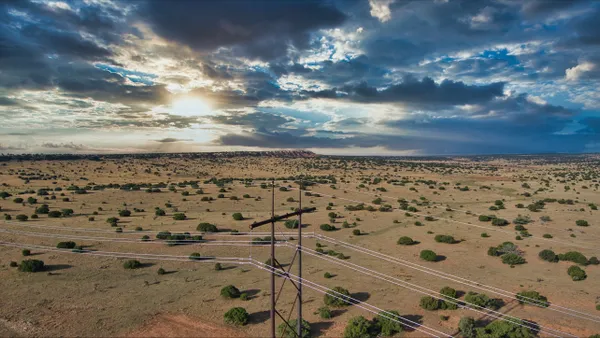Correction: A previous version of this article misstated DOER's recommended 600 MW energy storage procurement target.
Dive Brief:
-
The Massachusetts Department of Energy Resources (DOER) has released an energy storage report that provides a roadmap of policy recommendations to grow the energy storage market in the state,saying that the state could hit 600 MW of storage if all recommended programs are adopted.
-
The report, State of Charge, is part of the state’s $10 million Energy Storage Initiative that includes funding for the study, as well as for demonstration projects.
-
The study examines two key uses for storage: its potential to help capture the full value and potential of renewable energy resources and its ability to shave peak loads and thereby reduce rates for customers.
Dive Insight:
In August, the Massachusetts legislature passed a bill that could make the state one of only three in the nation to have an energy storage mandate.
That legislation was one more step in the effort to increase the use of energy storage in the state. The state began paving the way for wider use of storage in May 2015 when Gov. Charlie Baker (R) announced the Energy Storage Initiative (ESI).
The resulting State of Charge report recommends policy changes, including encouraging regional coordination for energy storage, amending the Alternative Portfolio Standard (APS) to include all types of advanced energy storage, encouraging expanded use of energy storage in existing energy efficiency programs, considering energy storage as a utility grid modernization asset, and pairing storage with renewables in future long-term clean energy procurements.
If adopted, the report says Massachusetts has the potential for 600 MW of energy storage by 2025. The state now has about 2 MW of energy storage on its grid.
“This has the potential to be a game changer,” Matthew Beaton, the state’s Energy and Environmental Affairs Secretary.
Storage is a rare technology that can address all three elements that Massachusetts is seeking as it seeks to diversify its energy portfolio: lower costs, carbon reduction and reliability, Beaton said.
In terms of costs, Beaton said energy storage used as a peak shaving tool has the potential to save ratepayers hundreds of millions of dollars over the next decade. The study found that on average from 2013 to 2015, Massachusetts electricity customers annually spent over $3 billion, with 40% of that spending occurring in the top 10% most expensive hours.
In line with the study’s recommendation for setting a 600 MW energy storage procurement target, the state is preparing to hold stakeholder process this autumn to determine “whether or not we should set storage targets,” Judith Judson, DOER commissioner, said.
Matt Roberts, executive director of the Energy Storage Association, called the 600 MW target “conservative” compared with the 1,766 MW of cost-effective storage that was modeled in the study.
With that much storage on the grid, the report estimates state electricity demand could be cut 10% and ratepayers could accrue $2.3 billion in aggregate benefits, if storage is located and dispatched optimally.













